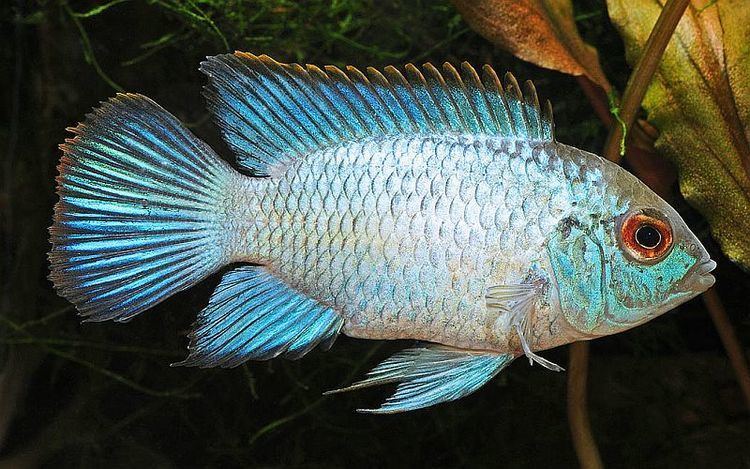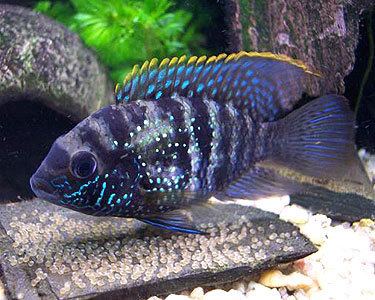Order Perciformes Subfamily Cichlasomatinae Rank Species | Phylum Chordata Higher classification Andinoacara | |
 | ||
Similar Cichlid, Aequidens, Green terror, Firemouth cichlid, Banded cichlid | ||
Electric blue acara video fincasters episode 29 electric blue acara
The blue acara (Andinoacara pulcher) is a very colorful freshwater fish in the cichlid family. This fish can be found in Central and South America, from Panama to Colombia. They can reach lengths of 20 cm (7.9 in). The name Andinoacara pulcher is indicative to its looks; pulcher meaning "beautiful" The blue acara is a common cichlid sold in many pet stores, and is often confused with or sold as a green terror (Andinoacara rivulatus).
Contents
- Electric blue acara video fincasters episode 29 electric blue acara
- Huge electric blue acaras full grown adults
- Description
- Taxonomy
- Distribution and habitat
- References

The body is stocky and compact with a steel blue-gray coloration. Noticeable horizontal green lines occur on their faces and their blueish-green scales give them a sparkling appearance. They also have long, flowing fins with a hint of orange to the tips.
Blue acaras natively live in a tropical climate and prefer water with a pH of 6.5-8.0, a water hardness of 25° dGH, and a water temperature of 22–30 °C (72–86 °F).
Huge electric blue acaras full grown adults
Description

The blue acara normally grows to around 13 cm, but has been scientifically measured at 16.0 cm (6.3 in). The body is compact and stocky, while the fins are long and flowing, with a rounder head than on similar cichlids.
The main body colour can vary from browns to blues to black due to local diversity. The body is decorated with five to eight vertical black stripes (which may not always be distinctly visible) and blue iridescent spots, and the face sports a few horizontal green lines. The fins have a hint of orange on the tips and some specimens have a red topfin rim. A distinctive black line is present going from the eye down the cheek; this one line is not found on other similar cichlids.
Taxonomy
Formally Aequidens pulcher, this fish was suggested to be reclassified in 2012 during the study of Andinoacara rivulatus Stalsbergi and the recently discovered Andinoacara bloombergi. The fish was included into the Andinoacara genus due to the genetic similarity with the new family.
Distribution and habitat
The blue acara lives in South and Central America, south to Trinidad and Tobago, Colombia, and Venezuela. The species can be found in both clear and turbid flowing streams.
